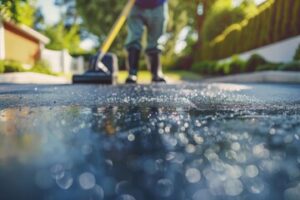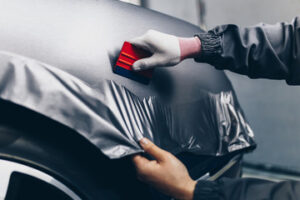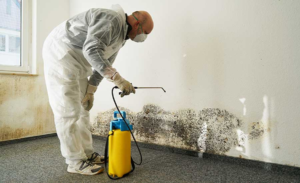A well-designed training program can help your business tackle critical business difficulties. It can also motivate employees to perform better and improve the quality of their work. Moreover, it can help you save costs on recruiting and hiring new staff members.

Corporate training programs should address learning styles to keep employees engaged. This includes visual, kinesthetic, and auditory content. It also helps if the delivery is engaging and easy to understand. Keep reading the article below to learn more about Corsi Di Formazione Per Aziende.
As companies grow, they need to make sure their employees are trained and able to perform. Corporate training services provide an array of programs and methods to help new hires get up to speed quickly. Orientation and onboarding are two of the most critical components in this process. Both are designed to help a new employee feel at home in the workplace and to provide them with the knowledge and resources they need to be successful in their roles.
Orientation is typically shorter than onboarding, and it introduces new hires to company culture and general information. This can include an introduction to the company’s history, mission, values, and policies. It may also include a workplace tour, a kit of company supplies, and an initial training program for the role they will be hired for.
Onboarding, on the other hand, is a more comprehensive and extended process that helps employees understand their roles, improve performance, and increase engagement. This can include a more extensive training program, and may last for months or even years. It can also incorporate reboarding for employees returning to their jobs after a leave of absence.
An effective orientation and onboarding process is essential to the success of a business, as it can significantly reduce employee turnover rates and increase productivity. These processes also set the stage for a long-term partnership between an employer and its employees, and can be used to guide both current and future growth.
The key to creating an effective onboarding and orientation process is to ensure that it is tailored to the needs of each new hire. This can be done by using a blended learning approach that offers different ways to learn for each individual’s preferred style. For example, using a platform like Enboarder to deliver the curriculum can ensure that all employees are able to engage with the material. In addition, it is important to give employees a clear roadmap for the progress they will make during their onboarding experience, as this can help them feel supported and motivated to succeed. Finally, it is important to celebrate milestones and achievements along the way to keep them engaged.
Conflict resolution
Conflict resolution services are an important tool for managers and supervisors, as disagreements in the workplace are inevitable. Handling these disputes efficiently helps everyone involved remain productive and prevents resentment from building up over time. However, resolving these disagreements requires certain skills that not all people have naturally. These include calmness, communication, and compromise.
The first step in conflict resolution is to identify the source of the issue. During the training, participants will learn about the Thomas-Kilmann model, which describes five common ways that people respond to conflicts. Those who are avoidant tend to ignore the issue and this can lead to missed deadlines and resentment. Those who are competitive tend to blame others, while those who are cooperative try to find common ground.
Once the root cause of the conflict is identified, participants will be able to work together to create a solution that is mutually beneficial for all parties. This process involves brainstorming, identifying common goals, and encouraging open dialogue. It also includes learning to recognize and value different perspectives, which is important for the success of the company.
During the training, employees will learn to use active listening techniques, which involve fully engaging with the speaker and focusing on their words and tone of voice. This enables the speakers to feel heard and understood, establishing trust and laying the foundation for productive conversation. In addition, participants will be taught to use “I statements” to avoid blaming or making unfair accusations.
Another method of resolving conflicts is mediation, which is often used in workplaces to help resolve disputes and improve morale. This technique allows all parties to share their views and concerns without being interrupted. It also helps to build teamwork and foster collaboration between employees. Lastly, mediation can help to identify and address underlying issues that may be causing the conflict.
Conflict resolution is a necessary skill for any employee, but it’s especially important for new managers who are not yet experienced in handling disagreements. Ineffectively handling a dispute can lead to resentment and can be costly for the company. Taking the time to develop conflict resolution skills will make it easier for new managers to deal with these situations and create a productive workplace.
Time management
Time management training programs help employees improve their ability to prioritize and focus on the most important tasks at hand. They teach participants to recognize and overcome distractions, procrastination, and self-limiting beliefs that can impede productivity. These skills can be applied at work as well as in everyday life. This type of training helps employees feel more productive and satisfied with their jobs. In addition, it can lead to a healthier lifestyle, as employees are better equipped to manage their daily stress.
Corporate training services can also teach employees how to develop leadership skills and foster collaboration. These skills are crucial in the workplace because they help employees make better decisions and contribute to the company’s bottom line. It is also a great way to increase employee engagement and retention, as employees who believe that their companies invest in them are more likely to stay at those organizations. In fact, a recent study found that companies that invest in employee training have 53% lower employee attrition rates than those that do not.
The effectiveness of a corporate training program depends on a variety of factors, including the method of delivery and the content itself. It is important to understand your employees’ learning styles and preferences so that you can design a training program that meets their needs. For example, some employees may prefer to learn through interactive hands-on activities while others might benefit from a more individualized approach.
Another factor that can affect the effectiveness of a corporate training program is its timing. Employees often have a lot on their plates, and if the training doesn’t match up with their schedule, it can be difficult to retain information. To avoid this, it is a good idea to schedule training after the holidays, after reviews, or during a low season.
Another critical aspect of corporate training is that it should be regularly updated to reflect new technology and industry trends. This is a great way to keep employees up-to-date and prevent them from falling behind in their knowledge of the industry. It can also encourage employees to think creatively and incorporate ingenuity into their work.
Performance management
A strong employee training program is essential for the success of any business. It helps improve productivity, boost morale, and increase long-term employee retention rates. This is especially important for businesses that are undergoing significant changes in their industry or company structure. To help employees adapt to these changes, a corporate training program should provide additional insights that go beyond regular performance reviews. This includes the ability to recognize and reward employees for things like effective time management, creative problem solving, or helping other team members complete their tasks.
Whether you are looking to develop new leadership skills, or you need to train your staff on the latest software applications, a corporate training service can help you achieve your goals. These services include training development, learning and event management, talent development, data collection, and more. Moreover, these services are designed to meet the needs of organizations of all sizes and industries.
Training should be fun and engaging, but it also needs to be relevant to your employees’ current positions and career aspirations. This can be done by involving employees in the process and using surveys and other feedback methods to evaluate their feelings about the training. This will ensure that the training is as effective as possible and that it satisfies the needs of the employees.
In addition, you should offer a variety of training styles to cater to your employees’ different preferences. Some of these training options include instructor-led training, coaching, simulation training, and video training. Each of these options has its own advantages and disadvantages. However, the most important thing is that you should select a training style that fits your budget and resources.
The final step in developing a high-performing workforce is to define your expectations and performance standards. This will help you make hiring decisions more effectively, and it will give your employees a clear picture of what is expected of them. Having clearly defined expectations will also make it easier for you to identify areas where your employees need more training or development. This will help you focus your resources on the most important aspects of your business.








